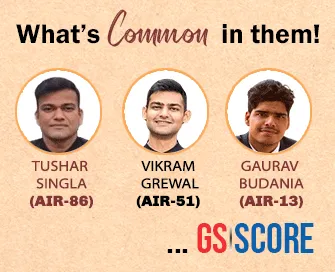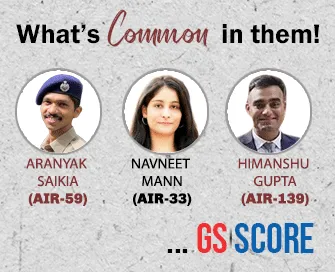

11th February 2025 (12 Topics)
Mains Issues
Context
U.S. President Donald Trump raised tariffs on steel and aluminum imports to 25%. The new tariffs apply to steel and aluminum from all countries without any exceptions or exemptions, including major suppliers like Canada, Brazil, Mexico, and South Korea, who had previously benefitted from exemptions.
Key Details
- New Tariff Rates: Steel and aluminum tariffs increase to 25%, affecting millions of tons of imports. This move simplifies the tariff system, applying uniformly to all countries.
- Impact on U.S. and Global Markets:S. steel imports make up 23% of its consumption. The new tariffs aim to combat foreign dumping of steel and revitalize domestic industries. However, it may lead to higher costs for U.S. industries relying on foreign metals.
- Domestic Industry Protection: The tariffs are meant to protect U.S. industries, particularly in national security sectors like defense and shipbuilding, which have seen declines in production. The goal is to boost domestic steel and aluminum output.
How will India be impacted?
- The Indian steel industry is already grappling with sluggish global demand and an influx of cheaper steel imports, particularly from China.
- With the latest tariff hike, domestic steel manufacturers now face additional pressure, further exacerbating their financial struggles.
Fact Box:India’s Steel Sector
|
PYQQ1. Account for the present location of iron and steel industries away from the source of raw material, by giving examples. (2020) Q2. Account for the change in the spatial pattern of the Iron and Steel industry in the world. (2014) Q. Which of the following are some important pollutants released by steel industry in India? (2014)
Select the correct answer using the code given below:
Solution: (d) |


Mains Issues
Context
In a significant step towards strengthening the UK-India defence relationship, the two countries launched the Defence Partnership India (DP-I) during the Aero India 2025 show. Several key defence agreements were signed, marking an important milestone in bilateral defence collaboration.
Key Highlights of DP-I and Defence Agreements:
- Defence Partnership India (DP-I): The UK set up a dedicated programme office within the UK Ministry of Defence to streamline and enhance defence cooperation between India and the UK.
- Air Defence Collaboration: Thales (UK) and Bharat Dynamics Limited (BDL) (India) signed a contract for the delivery of Laser Beam Riding MANPADs (LBRM), a type of missile system designed for air defence.
- The initial supply will include High Velocity Missiles (STARStreak) and launchers, scheduled for delivery later this year.
- This contract is a major step in advancing cooperation between the two countries in air defence technologies.
- Next-Generation Defence Technologies: After the LBRM contract, Thales and BDL will collaborate on the production of Lightweight Multirole Missiles (LMM). Thales and BDL have signed a contract that will deliver Laser Beam Riding MANPADs (LBRM), with an initial supply of High Velocity Missiles (STARStreak) and launchers to be delivered this year.
- Economic and Security Growth: The UK-India defence collaboration is aligned with India’s Atmanirbhar Bharat (self-reliant India)
- The agreements aim to not only bolster defence capabilities but also contribute to economic growth by generating jobs in both countries and improving interoperability between their armed forces.
- Missile Assembly and Testing Facility: MBDA UK and BDL are working together to establish an Advanced Short-Range Air-to-Air Missile (ASRAAM) assembly and testing facility in Hyderabad, India.
- This facility will enhance India’s fighter jet fleet and enable exports to global markets.
- Maritime Collaboration: A Statement of Intent was signed between the UK and India to design and develop an Integrated Full Electric Propulsion (IFEP) system for India’s next-generation Landing Platform Dock (LPD)
- As part of this initiative, GE Vernova and BHEL are collaborating to establish India’s first maritime land-based testing facility.
- The goal is to deliver the LPD in water by 2030.
Strategic Implications and Support for India’s Atmanirbhar Bharat Vision:
- The strengthening of defence ties with the UK directly supports India’s self-reliance in defence technologies and aligns with the country’s ambition to reduce dependency on foreign defence imports.
- These agreements also advance joint security and economic growth for both nations.
- The UK’s collaboration on next-generation weapons and defence technologies will not only enhance India’s defence capabilities but also help in upgrading manufacturing capacities within the country.
- The UK-India Defence Partnership is set to play a pivotal role in the modernization of India’s defence sector.


Mains Issues
Context
The NITI Aayog’s report titled ‘Expanding Quality Higher Education through States and State Public Universities’ provides a detailed analysis of state-level spending on higher education in India.
Key-highlights
- Top States for Education Expenditure (as a Percentage of GDP): Jammu & Kashmir leads with 8.11% of GDP spent on education, followed by:
- Manipur (7.25%)
- Meghalaya (6.64%)
- Tripura (6.19%)
- States like Delhi (1.67%), Telangana (2%), and Karnataka (2.01%) allocate much less.
- Expenditure Trends: Per youth expenditure on higher education rose from Rs. 2,174 to Rs. 4,921 between 2005-06 and 2019-20, but disparities across states have grown.
- Maharashtra has the highest higher education budget at Rs. 11,421 crore, followed by Bihar (Rs.9,666 crore) and Tamil Nadu (Rs.7,237 crore).
- Sikkim, Arunachal Pradesh, and Nagaland have the smallest budgets.
- GSDP Spending: Bihar spends 1.56% of its GSDP on higher education, followed by Jammu & Kashmir (1.53%) and Manipur (1.45%).
- Telangana has the lowest at 0.18%.
- University Density: Sikkim has the highest university density (10.3 universities per 1 lakh population), while Bihar has the lowest at 0.2.
- Gender Equality in Higher Education: Kerala, Chhattisgarh, and Himachal Pradesh have higher female enrollment than male. UTs like Chandigarh and Mizoram have balanced male-female enrollments.
Policy Recommendations from NITI Aayog's Report on Higher Education Expenditure
- NITI Aayog's report on higher education spending provides nearly 80 policy recommendations aimed at improving the quality, accessibility, and funding of higher education in India, particularly through State Public Universities (SPUs).
- The key policy areas include:
- Increase in Funding and Allocation
- Focus on Quality and Infrastructure
- Promotion of Research and Development (R&D)
- Improved Industry-Academia Collaboration
- Enhancing Gender Equality in Education
- Encouraging Private Investment
- Improved University Density in Overcrowded States
- Strengthening the Higher Education Regulatory Framework
- Revamping Curriculum and Skill Development


Mains Issues
Context
In 2015, the government emphasized urban development as a critical part of India's growth strategy, as cities contribute nearly 67% of the country’s GDP. However, despite its importance, cities seem to be left out of the government’s broader vision for a “Viksit Bharat” (Developed India). The Union Budget 2025’s allocations reveal the government's focus and the challenges facing urban development.
Budget Allocation for Urban India:
- The total allocation for urban development in FY 2024-25 is Rs.96,777 crore, which is an increase compared to last year’s Rs.82,576 crore.
- However, this increase doesn’t account for inflation, and when adjusted, it represents a decrease in real terms. Additionally, the Revised Estimate (RE) suggests that only Rs.63,669 crore will be spent by the end of FY 2024-25, reflecting an underutilization of around 22.9%.
- A key shortfall is in the Pradhan Mantri Awas Yojana (Urban) [PMAY(U)], where the original allocation of Rs.30,170 crore was significantly reduced to Rs.13,670 crore in the RE, indicating a gap between policy goals and actual execution.
Reduction in Urban Development Funding:
Urban India primarily receives funds through three channels. The government’s budgetary approach this year shows a reduction in funding across these channels:
- Direct Transfers to ULBs: With the abolition of octroi, a key revenue source for cities, and the introduction of GST, ULBs have experienced a 21% fall in revenue. Despite this, the budget allocation for ULBs has only slightly reduced from Rs.26,653 crore to Rs.26,158 crore, which is insufficient to meet growing urban needs, forcing cities to rely more on local taxes.
- Centrally Sponsored Schemes (CSS): These schemes, which involve cost-sharing between the Union, States, and local governments, include major urban development initiatives like PMAY, Swachh Bharat Mission (SBM), AMRUT (Atal Mission for Rejuvenation and Urban Transformation), and Smart Cities Mission. However, these programs have seen cuts:
- PMAY (Urban): Allocation for the CSS component was reduced by 30% compared to last year.
- AMRUT & Smart Cities Mission: The combined allocation of Rs.10,400 crore last year has been reduced significantly this year, with almost no funds remaining for the Smart Cities Mission.
- SBM (Urban): Despite the same allocation of Rs.5,000 crore as last year, the RE indicates only Rs.2,159 crore will be spent, which is a 56% reduction in spending.
- Central Sector Schemes: These schemes are directly managed by the Union government and typically focus on large-scale infrastructure projects, such as metro rail expansions. Metro projects have seen significant increases in funding:
- Mass Rapid Transit Systems: The budget allocation for metro projects in FY 2024-25 was Rs.21,336 crore, rising to Rs.24,691 crore in the RE, and the 2025-26 budget proposes a 46% increase, bringing it to Rs.31,239 crore.
This prioritization of metro projects over more inclusive urban mobility options raises concerns about the long-term sustainability and inclusivity of urban development.
The New Urban Challenge Fund:
To address some of these challenges, the government has introduced a new Urban Challenge Fund of Rs.10,000 crore. This fund is part of an ambitious target to raise Rs.1 lakh crore for urban redevelopment projects. However, the government expects half of this amount to come from private investments, which seems overly optimistic given the sector's poor track record in attracting private funding for projects like the Smart Cities Mission.
Key Issues with the Budget Approach:
The budget’s focus on capital-intensive infrastructure projects, such as metro systems, overlooks the broader needs of urban India, including:
- Employment Generation: There is little emphasis on creating green jobs or generating employment in the urban development sector.
- Sustainable Economic Policies: The emphasis on large-scale infrastructure projects may ignore the need for sustainable development, potentially widening existing social and economic disparities in cities.
- Social and Economic Equity: The growing focus on infrastructure over inclusivity and equitable development could worsen inequalities in urban areas, particularly for marginalized communities.
Urbanisation:
|


Mains Issues
Context
Micro, Small, and Medium Enterprises (MSMEs) are essential to India’s economy, contributing significantly to employment and GDP. Despite several government initiatives, the sector continues to struggle, particularly due to bottlenecks in eligibility criteria for government schemes and inadequate support for micro-enterprises.
Budget 2025:
- Budget 2025 introduced several new provisions for MSMEs, including raising the credit cover for MSMEs from Rs.5 crore to Rs.10 crore.
- However, the biggest concern is the doubling of eligibility criteria from a 250 crore to Rs.500 crore turnover.
- This change means many smaller micro and small enterprises will no longer benefit from key provisions under the MSME Act, such as priority sector lending, government procurement preferences, and price advantages in tenders.
- Corporates may even create separate entities to take advantage of these benefits, further sidelining genuine MSMEs.
- New Initiatives:
- Focus Product Scheme for Footwear and Leather: This aims to boost the production of leather and footwear, potentially creating 2 million jobs and generating a turnover of Rs.4 lakh crore.
- Toys Sector Development: Under the National Action Plan for Toys, the government plans to develop toy manufacturing clusters and promote India as a global toy manufacturing hub.
What MSMEs Actually Need?
Rather than simply offering broad-based credit guarantees, what MSMEs urgently need are policies tailored to their specific challenges. These challenges can be categorized into four ‘M’s:
- Money: Many MSMEs face liquidity issues, unable to secure affordable credit.
- Manpower: There is a need for skilled labor, but MSMEs struggle to offer competitive wages.
- Marketing: MSMEs often lack access to markets, particularly global ones.
- Materials: Increasing raw material costs have made operations unprofitable for many MSMEs.
The government could support MSMEs by ensuring stable raw material prices, offering affordable credit, and providing training programs for upskilling workers.
Policy Suggestions:
- Separate Ministry for Micro Enterprises: Micro-enterprises face challenges different from those of small and medium enterprises. A dedicated ministry could focus on their unique needs and create specific policies for their growth and sustainability.
- Relax Eligibility Criteria: The government should relax eligibility criteria for credit guarantee schemes and other government schemes to ensure that struggling MSMEs can access the necessary support.
- Address Price Hikes: The government should work towards stabilizing the prices of basic raw materials and offer subsidies to help MSMEs manage costs.
- Long-Term Support: More comprehensive and long-term policies are needed, focusing on sustainable growth, market access, and technological upgradation.
Fact Box:About MSMEs
|
|||||||||||||||


Prelims Articles
Context
Biren Singh resigned as the Chief Minister of strife-torn Manipur. With Singh’s resignation, speculation has risen about the possibility of President’s Rule in the state.
What is President’s Rule?
- President’s Rule in a state is governed by Article 356 of the Indian Constitution.
- Article 356 allows the President to intervene when a state government fails to comply with constitutional provisions or when the governance of the state becomes impossible under the existing government.
- Conditions for Imposing President's Rule:
- Failure to Comply with Constitutional Provisions: The President must be convinced that the state government cannot function in accordance with the Constitution.
- Failure to Form a New Government: If the state government fails to elect a new chief minister within a reasonable time frame after the resignation of the previous one.
- Coalition Breakdown: If a coalition government collapses, the Chief Minister loses majority support in the legislature, and they fail to prove their majority within the set time.
- No-Confidence Vote: If the state assembly loses its majority following a no-confidence vote.
- Extraordinary Circumstances: Delayed elections due to reasons like natural disasters, war, or epidemic.
- What Happens Under President’s Rule?
- Governor Takes Over Administration: The state government is replaced by the Governor, who administers the state on behalf of the President, supported by appointed advisors and administrators.
- State Legislature Powers Shift to Parliament: The President can declare that the legislative powers of the state will be exercised by Parliament. The State Legislative Assembly may be suspended or dissolved.
- Issuance of Ordinances: When Parliament is not in session, the President can issue ordinances to handle the administration of the state.
- Revocation of President’s Rule:
- President’s Rule can be revoked at any time by a subsequent proclamation from the President.
- The revocation does not require Parliament's approval.
- Typically, this happens when a political leader claims majority support in the assembly and presents evidence to form a new government.
Fact Box:Manipur ethnic clashes
Tribes in Manipur
|


Prelims Articles
Context
The Reserve Bank of India (RBI), in its recent monetary policy announcement, expressed concern over banks preferring to park their excess funds in the Standing Deposit Facility (SDF) rather than lending them in the uncollateralized call money market.
What is the Standing Deposit Facility (SDF)?
- The SDF is a tool introduced by the RBI in April 2022 to manage liquidity in the banking system.
- It absorbs excess liquidity (deposits) from commercial banks without requiring the banks to provide government securities as collateral.
- Purpose: The SDF serves as a floor for the Liquidity Adjustment Facility (LAF) corridor, replacing the reverse repo rate mechanism.
- How it works: Banks can park their excess funds with the RBI in exchange for interest, but without needing to provide any collateral in return.
- The SDF was introduced when there was a liquidity surplus in the market, meaning there was more money in the banking system than needed.
- Unlike the reverse repo, which requires the RBI to provide government securities to banks, the SDF does not involve any collateral, making it a simpler tool for liquidity absorption.
- RBI’s Concerns
- Liquidity Deficit: Despite a liquidity deficit, banks are parking funds in the SDF, which prevents the flow of funds in the call money market.
- Impact on Rates: The overnight call money rate is 5-10 basis points higher than the repo rate, as funds aren’t circulating in the interbank market.


Prelims Articles
Context
Bharat Biotech’s group company, Biovet, has received approval from the Central Drugs Standard Control Organisation (CDSCO) to market a vaccine against Lumpy Skin Disease (LSD) in dairy cattle and buffaloes. This vaccine, named Biolumpivaxin is the world’s first Differentiating Infected from Vaccinated Animals (DIVA) marker vaccine for LSD.
About the Vaccine (Biolumpivaxin):
- Biolumpivaxin is a live-attenuated marker vaccine developed by Biovet in collaboration with the Indian Council of Agricultural Research-National Research Centre on Equines (ICAR-NRCE).
- The vaccine uses the LSD virus/Ranchi/2019 strain and provides single-dose vaccination for cattle and buffaloes above 3 months of age.
- It is the world’s only DIVA marker vaccine, allowing the distinction between vaccinated and naturally infected animals.
- Storage and Efficacy: The vaccine is stable at a temperature range of 2-80°C and has shown high safety and efficacy.
- Production Capacity: Biovet can produce up to 500 million doses of the vaccine, which will be commercially available soon.
- Significance: This vaccine marks a crucial step toward India's self-reliance in veterinary healthcare, supporting the Atmanirbhar Bharat initiative and reducing dependency on imported vaccines.
About:Lumpy Skin Disease (LSD):
|


Prelims Articles
Context
India's Advanced Medium Combat Aircraft (AMCA) and Light Combat Aircraft-Mk2 (LCA-Mk2) are key to modernising the Indian Air Force (IAF). The AMCA, a fifth-generation stealth fighter, is set to roll out by 2026-2027, while the LCA-Mk2, an enhanced version of the Light Combat Aircraft, is expected by 2025.
About AMCA:
- The AMCA is a stealth, twin-engine, 25-tonne fighter jet with advanced features like an internal weapons bay and Diverterless Supersonic Intake (DSI), developed in India.
- Armament: It is designed to carry 1,500 kg of internal payload and 5,500 kg of external payload. It will carry around 5 tonnes of weapons internally and can also carry weapons externally, acting as both a stealth and non-stealth aircraft.
- Development Timeline: The first prototype is expected in 2026-2027, with the development phase planned to last 10 years. The aircraft is expected to be certified by 2032 and inducted into the IAF by 2034.
- Global Context: The AMCA is India's first attempt at a fifth-generation fighter aircraft (FGFA), while countries like China have already deployed their own FGFA models, putting pressure on India to accelerate its development.
About LCA-Mk2:
- The LCA-Mk2 is an enhanced version of the Light Combat Aircraft (LCA), offering better capabilities, including 11 weapon stations and the integration of indigenous weapons.
- Development Timeline: The first prototype is expected by 2025, and it is likely to be inducted into service by 2028-2029.
- Importance: The LCA-Mk2 is expected to be a lethal weapon platform for the Indian Air Force, enhancing its combat capabilities and helping address gaps in fighter squadrons.


Editorials
Context
The fisheries dispute in the Palk Bay region has escalated with the recent arrest of 14 Indian fishermen by the Sri Lankan Navy for alleged poaching. This marks a continuation of a long-standing conflict between Tamil Nadu fishermen and Sri Lanka over fishing rights and violations of the International Maritime Boundary Line (IMBL). The total number of Indian fishermen detained this year has reached 77, highlighting the severity of the issue.
Increasing Arrests and Legal Challenges
- Recent Arrests and Incidents: Recently, Indian fishermen were arrested by the Sri Lankan Navy, and two trawlers were impounded. Earlier, the Sri Lankan Navy fired at an Indian boat, injuring two fishermen.
- Court Challenges: The issue of detentions has worsened, with Sri Lankan courts imposing large fines and long prison sentences. Recent data reveals a steep rise in arrests, with over 500 Indian fishermen detained in Sri Lanka in 2024, the highest in a decade.
- Complications in Release: Despite some releases, such as the nine fishermen from Karaikal, the imposition of heavy fines and convictions for IMBL violations has complicated the swift release of detained fishermen.
Sri Lanka's Fishermen's Concerns
- Tensions over Fishing Methods: Sri Lankan fishermen, particularly those in the Northern Province, have expressed opposition to bottom trawling methods employed by Indian fishermen, citing ecological damage to their waters.
- Economic and Environmental Strain: The over-exploitation of marine resources by Indian fishermen has contributed to tensions, as Northern Sri Lankan fishermen are still recovering from the civil war and seek sustainable fishing practices to protect their waters.
- Calls for a Sustainable Solution: Local communities in Sri Lanka are advocating for a solution that considers both ecological sustainability and economic needs, pushing for restrictions on harmful fishing practices.
Need for Diplomatic Intervention and Long-Term Solutions
- India-Sri Lanka Talks: Despite repeated requests for dialogue between fishermen of both nations, the Sri Lankan government has been reluctant to engage in meaningful negotiations. The last such talks were held in 2016, and the issue was also raised during a meeting in Colombo in October 2024.
- Proactive Diplomacy: The ongoing arrests signal the need for a new diplomatic approach to resolve the fisheries conflict, moving beyond the status quo and addressing the concerns of both sides.
- Incentivizing Change: New Delhi must explore incentives to encourage Tamil Nadu fishermen to transition from ecologically destructive practices like trawling. This shift will require time but should be supported by proactive discussions and immediate steps to ensure a more sustainable fishing approach.
Practice Question:
Q. Discuss the key issues and challenges arising from the fisheries dispute between India and Sri Lanka in the Palk Bay region. How can diplomatic intervention and sustainable fishing policies help resolve this long-standing conflict?


Editorials
Context
India has accepted France's invitation to co-chair the AI Action Summit in Paris on February 10-11, 2025. This summit focuses on AI safety, innovation, public interest AI, and governance issues, providing India an opportunity to represent the Global South in these discussions. It also presents a chance to amplify India's role in global AI policy-making, as well as in future AI-related multilateral forums.
India’s Role in Global AI Safety
- Global Engagement on AI Safety: India has actively participated in previous AI summits in the U.K. and South Korea, discussing AI safety, risk management, and the establishment of AI Safety Institutes (AISI) across the globe.
- Championing the Global South: India has consistently represented the Global South in multilateral forums like the G20 and the Global Partnership on Artificial Intelligence (GPAI), advocating for equitable access to AI resources and technology.
- Plans for AI Safety Institute: India plans to establish its own AI Safety Institute to further bolster its engagement and leadership in global AI safety discourse, ensuring a proactive stance in addressing emerging AI risks.
Strategic Priorities for India at the Summit
- Democratising AI Resources: India should advocate for equal access to the AI value chain, including computing hardware, data sets, cloud platforms, and AI safety tools like watermarking technology. It should also push for the promotion of open-source AI models.
- AI Use-Case Prioritisation: India should propose the development of AI solutions tailored to the unique needs of the Global South, such as disease detection systems, personalized education platforms, and region-specific agricultural tools.
- Contextualizing AI Risks: India must emphasize the need for region-specific AI risk assessments and safety measures, particularly focusing on the cultural and social risks posed by AI models trained on Western data.
India’s Vision for AI Governance
- Leveraging Paris Summit: India should use its role in the Paris summit to further the Global South's priorities in AI governance, technology access, and safety frameworks, positioning itself as a leader in inclusive AI policymaking.
- Promoting Collaborative Frameworks: India can help develop a collaborative framework that ensures AI technologies benefit the Global South, contributing to a more equitable distribution of AI innovation and infrastructure.
- Future Summit Hosting: By advancing these priorities, India can secure the opportunity to host the next AI Action Summit, solidifying its role as a key mediator between the AI superpowers of the Global North and the developing world.
Practice Question:
Q. As co-chair of the AI Action Summit 2025, India has the opportunity to shape global AI governance. Discuss how India can leverage this platform to represent the interests of the Global South, particularly in terms of access to AI resources and addressing regional risks.


Editorials
Context
Aero India 2025, held at the Indian Air Force station at Yelahanka in Bengaluru from February 10-14, is a landmark event marking India’s growing presence in global aerospace and defence. This edition showcases India's technological advancements and commitment to self-reliance in defence production under the leadership of Prime Minister Narendra Modi.
Evolution and Growth of Aero India
- From Humble Beginnings: Aero India, initially held in 1996, has transformed from a small aviation expo into a global defence exhibition, attracting leading aerospace and defence manufacturers from across the world.
- Global Participation: This year, 106 OEMs, including 55 foreign entities from 19 countries, and 35 Indian manufacturers, are participating, highlighting India’s role in global defence manufacturing.
- Strategic Importance: The event serves as a crucial platform for fostering innovation, technological collaboration, and strategic alliances between Indian and international defence sectors.
Key Highlights of Aero India 2025
- Cutting-Edge Aircraft Display: For the first time, two advanced fighter jets, the Russian Su-57 and the American F-35, will be showcased, reflecting the global significance of Aero India.
- India’s Fifth-Generation Fighter Aircraft: India will present a model of the indigenous Advanced Medium Combat Aircraft (AMCA), which has 75% domestic content, marking a major leap towards self-reliance in fighter aircraft production.
- Start-up Innovation Focus: A special platform, ‘Manthan’, will highlight advancements from Indian start-ups, showcasing innovations under the iDEX initiative, which supports defence and aerospace technologies developed within India.
Visitor Experience and Improvements
- Enhanced Infrastructure: Significant improvements include expanded roads, dedicated routes, and real-time traffic management, ensuring smooth access for the expected 7 lakh visitors.
- Security and Amenities: Aero India 2025 prioritizes safety with multi-tiered security arrangements and enhanced amenities such as comfortable seating, improved dining options, and assistance booths for a seamless experience.
- Technology Demonstrations and Seminars: Along with the static exhibition, visitors will experience aerial displays, live tech demos, and seminars, offering insights into the latest developments in aerospace and defence.
Practice Question:
Q. Aero India 2025 signifies India’s growing technological and manufacturing prowess in the aerospace and defence sector. Discuss the event's significance in shaping India's self-reliance in defence production and fostering global partnerships.




